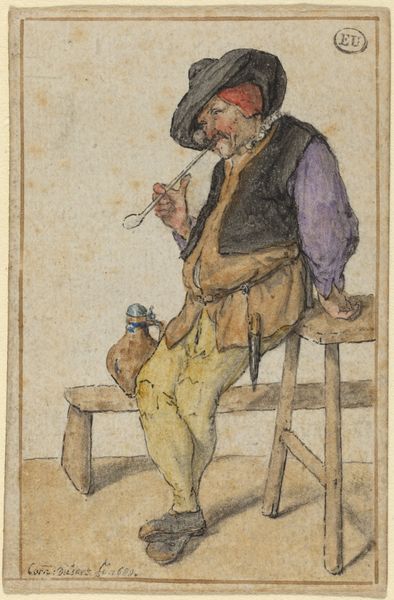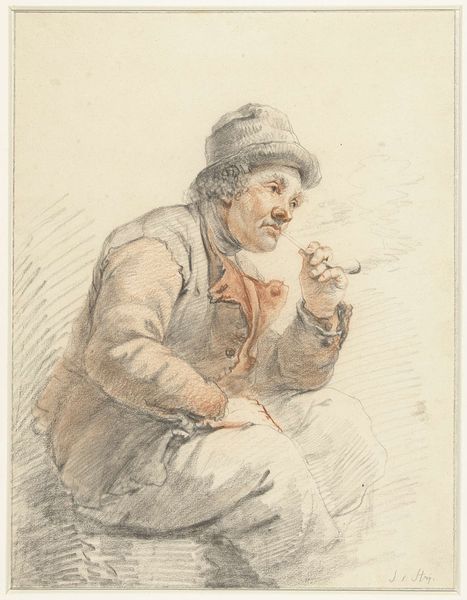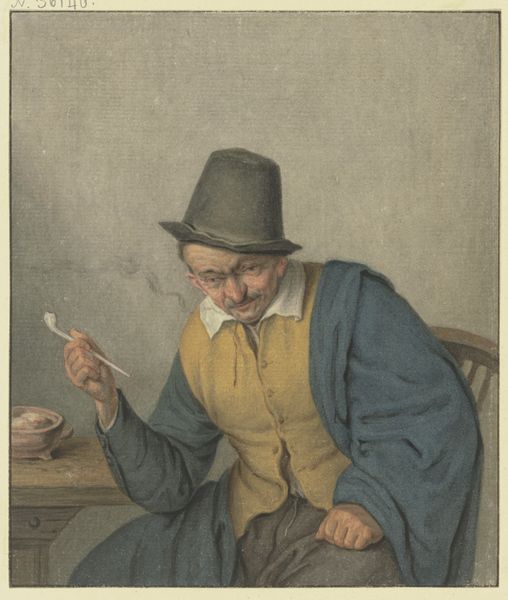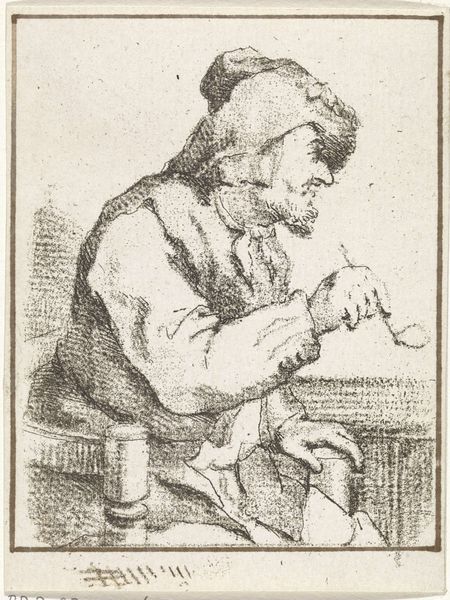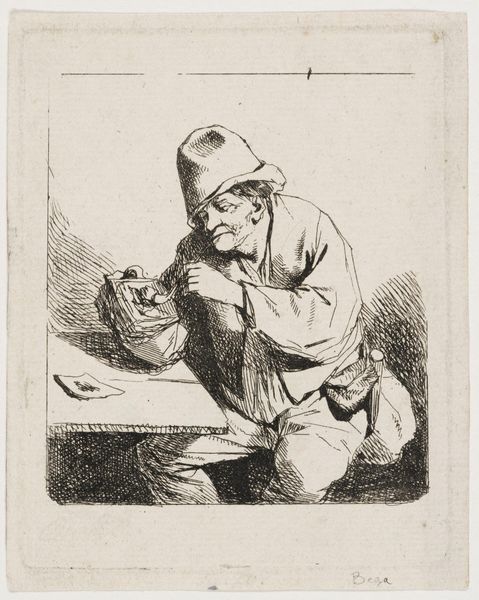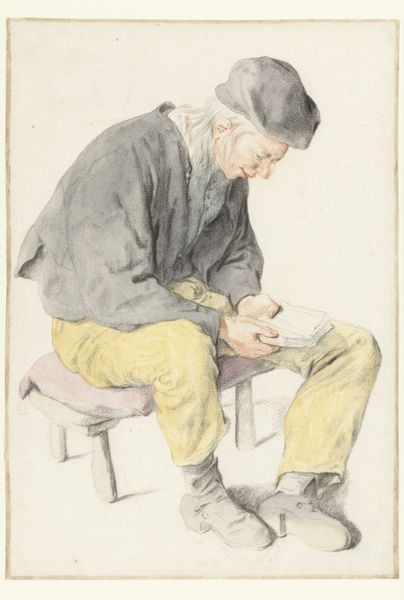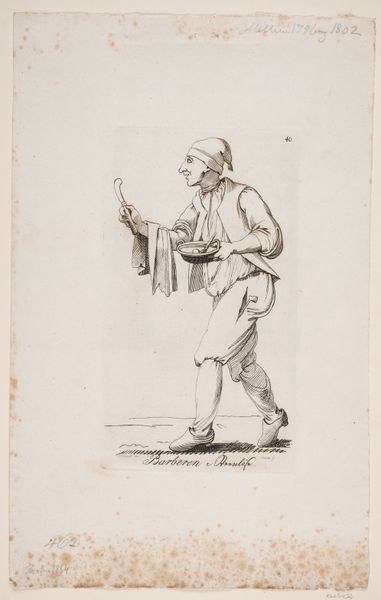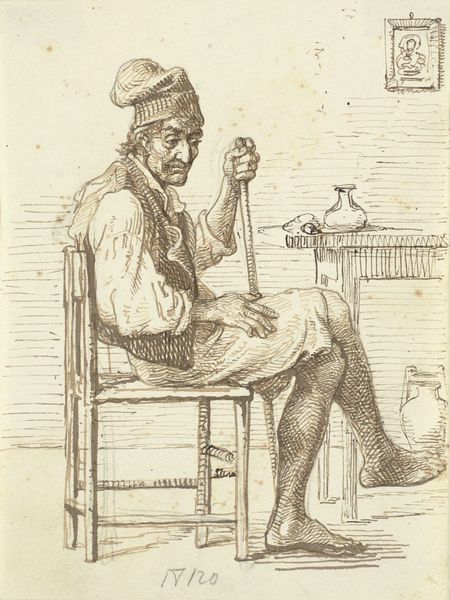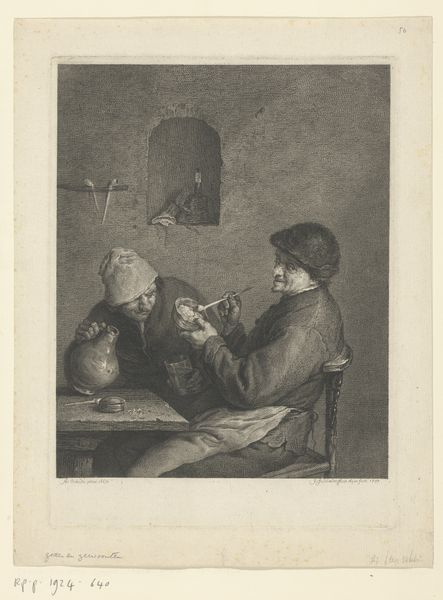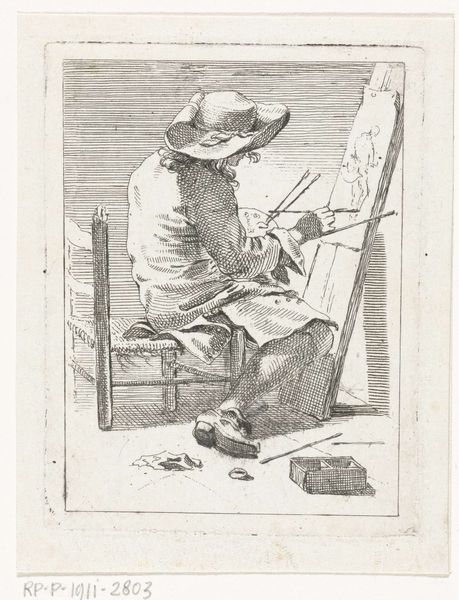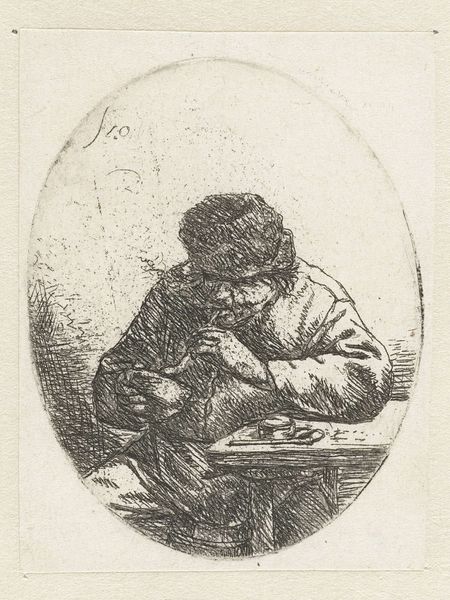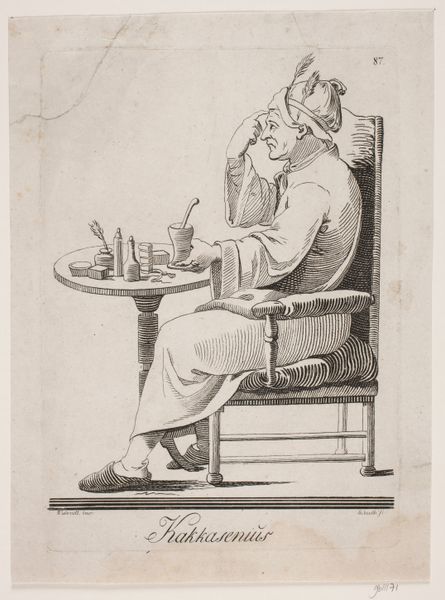
watercolor
#
portrait
#
baroque
#
watercolor
#
watercolour illustration
Dimensions: height 110 mm, width 85 mm
Copyright: Rijks Museum: Open Domain
Curator: Welcome to the Rijksmuseum. We’re standing before “Pijprokende man in een armstoel, naar links,” or “Man Smoking a Pipe in an Armchair, Facing Left,” a watercolour illustration created by Aert Schouman sometime between 1720 and 1792. What strikes you first about this piece? Editor: There's a gentleness in the watercolour that subdues what could be a mundane scene, giving it a strangely intimate quality. It feels as if we've caught him in a moment of contemplation, undisturbed. Curator: Absolutely. The subject is, on the surface, rather ordinary, but Schouman elevates it. In the 18th century, images of everyday life began to take on new importance, reflecting a growing interest in the individual. These kind of Baroque illustrations became an entry point into understanding the lives of people outside of noble portraiture. Editor: I agree. His hat is crumpled and stained; it reveals his social position. But the artist doesn’t diminish his character through it. He allows him a space for calm and reflection within the composition, imbuing a level of complexity and individual humanity, even if limited by class boundaries. The pipe isn't just an accessory; it's almost a symbol of his contemplative state. Curator: Smoking scenes were indeed popular and carried a wealth of meanings, often associated with leisure, sociability, but also a more personal form of enjoyment. Editor: It’s fascinating to me how an image like this one reflects back at the power dynamics that were in play. Who got represented and in what manner? The way this figure is depicted speaks to those constraints and that the art has to walk this fine line to represent different classes. It's art operating as social commentary, in its way. Curator: And remember how galleries themselves are structured to represent specific versions of society and its participants. Looking closely, these artworks ask as many questions of the institutions as of themselves. Editor: True! They speak of social dynamics and invite questions. Curator: Yes, art can challenge the prevailing narrative and offer different possibilities to the audiences that have a chance to contemplate it. Thank you for these insights. Editor: And thank you; considering its cultural position provides a fascinating vantage point on both the art and its setting.
Comments
No comments
Be the first to comment and join the conversation on the ultimate creative platform.
